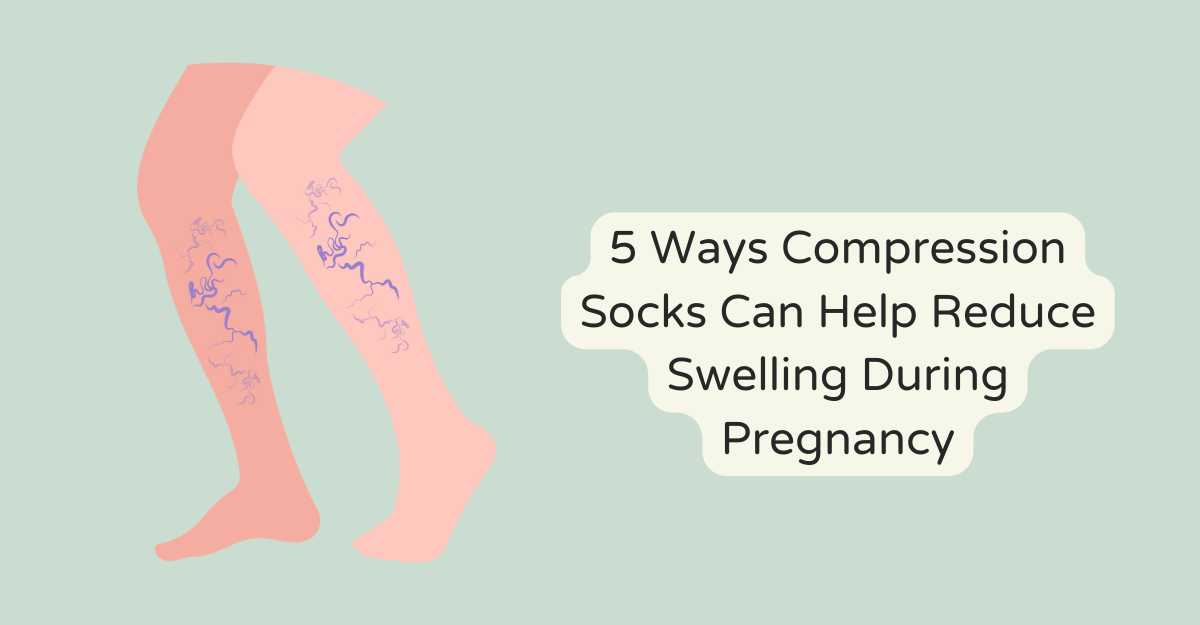
5 Ways Compression Socks Can Help Reduce Swelling During Pregnancy
Pregnancy is a beautiful journey filled with excitement and anticipation. However, it also comes with its share of challenges, including swelling in the legs and feet. Compression socks are a valuable tool for expectant mothers seeking relief from swelling, also known as edema, during pregnancy. These specialized socks are designed to provide gentle pressure to the legs, promoting better circulation and reducing fluid retention. Here are five ways compression socks can help alleviate swelling and discomfort during pregnancy. From improving blood flow to supporting the lymphatic system, each aspect highlights the significant role that compression socks play in enhancing maternal comfort and well-being.
1. Improving Circulation
One of the primary benefits of compression socks for women during pregnancy is their ability to improve circulation in the legs and feet. As the uterus expands during pregnancy, it can exert pressure on the blood vessels in the pelvic area, leading to decreased circulation in the lower extremities. This can contribute to swelling and discomfort in the legs and feet. Compression socks help counteract this by applying gentle pressure to the legs, which assists in pushing blood back toward the heart, improving circulation, and reducing swelling. By promoting better blood flow, compression socks can alleviate the symptoms of edema and enhance overall comfort for expectant mothers.
2. Supporting Lymphatic Drainage
In addition to improving blood circulation, compression socks can also support the lymphatic system, which plays a crucial role in fluid balance and immune function. During pregnancy, hormonal changes and the growing uterus can disrupt lymphatic drainage, leading to fluid retention and swelling in the legs and feet. Compression socks help stimulate lymphatic flow by applying gentle pressure to the tissues, promoting the movement of excess fluid toward lymph nodes for elimination. This aids in reducing swelling and discomfort associated with edema during pregnancy. Supporting lymphatic drainage can also help boost the immune system, which is particularly important during pregnancy when the body is more susceptible to infections.
3. Alleviating Leg Cramps and Discomfort
Many expectant mothers experience leg cramps and discomfort, especially during the later stages of pregnancy. Compression socks can help alleviate these symptoms by providing support to the muscles and reducing muscle fatigue. The gentle pressure exerted by compression socks helps stabilize the muscles, preventing excessive movement and reducing the risk of cramping. Compression socks can improve muscle recovery after physical activity, reducing soreness and discomfort in the legs. Compression socks can also provide relief from the sensation of heavy, achy legs that many expectant mothers experience during pregnancy. By promoting better circulation and reducing fluid retention, compression socks help alleviate the pressure on the legs and feet, leading to improved comfort and mobility.
4. Minimizing Swelling in the Feet and Ankles
Swelling in the feet and ankles, also known as peripheral edema, is a common complaint among pregnant women, especially during the later stages of pregnancy. Compression socks can help minimize swelling by applying gentle pressure to the tissues, which helps prevent fluid retention and promotes better circulation. By wearing compression socks regularly, expectant mothers can reduce the severity of swelling in the feet and ankles, leading to improved comfort and mobility. Compression socks can also help prevent the development of more severe complications associated with peripheral edema, such as deep vein thrombosis (DVT) or varicose veins. By promoting better circulation and reducing fluid retention, compression socks help minimize the risk of blood clots and vein damage during pregnancy.
5. Enhancing Comfort and Mobility
Pregnancy can take a toll on the body, leading to discomfort and reduced mobility. Compression socks can help enhance comfort and mobility by providing support to the legs and feet, reducing swelling, and alleviating muscle fatigue. The gentle pressure exerted by compression socks helps stabilize the muscles and joints, allowing expectant mothers to move more comfortably and with less effort. Compression socks can also help improve posture and reduce the risk of back pain, which is common during pregnancy due to the changes in weight distribution and posture. By wearing compression socks that provide targeted support to the lower body, expectant mothers can alleviate pressure on the spine and pelvis, leading to improved posture and reduced discomfort.
Compression socks offer expectant mothers a range of benefits for reducing swelling and enhancing comfort during pregnancy. From improving circulation and supporting lymphatic drainage to alleviating leg cramps and discomfort, minimizing swelling in the feet and ankles, and enhancing overall comfort and mobility, these specialized socks play a significant role in promoting maternal well-being. By wearing compression socks regularly and choosing the right level of compression and fit, expectant mothers can alleviate the symptoms of edema and enjoy a more comfortable and active pregnancy. Compression socks provide valuable support in both the early and later stages of pregnancy. They can help you stay comfortable and healthy throughout this special time in your life.






